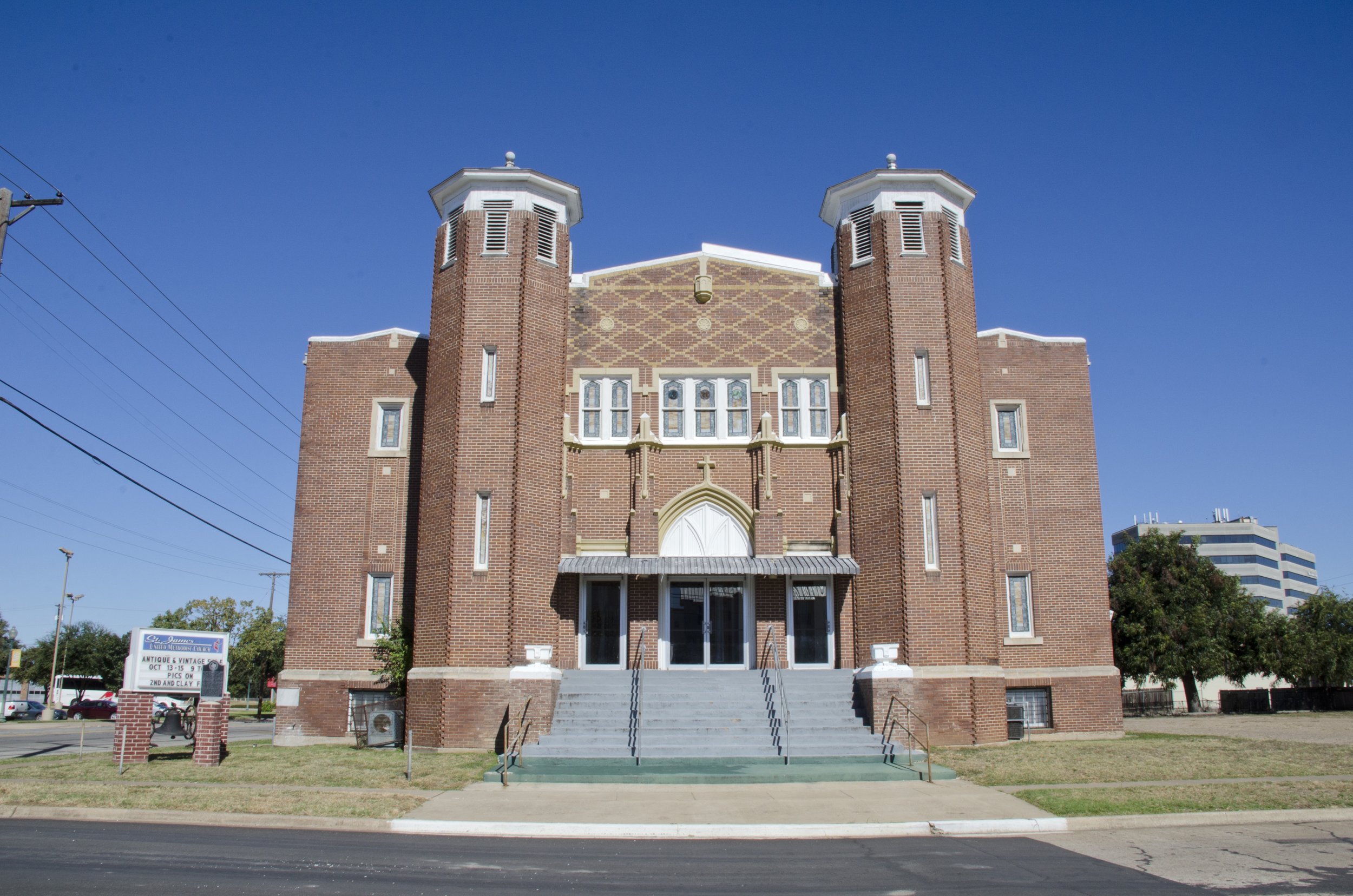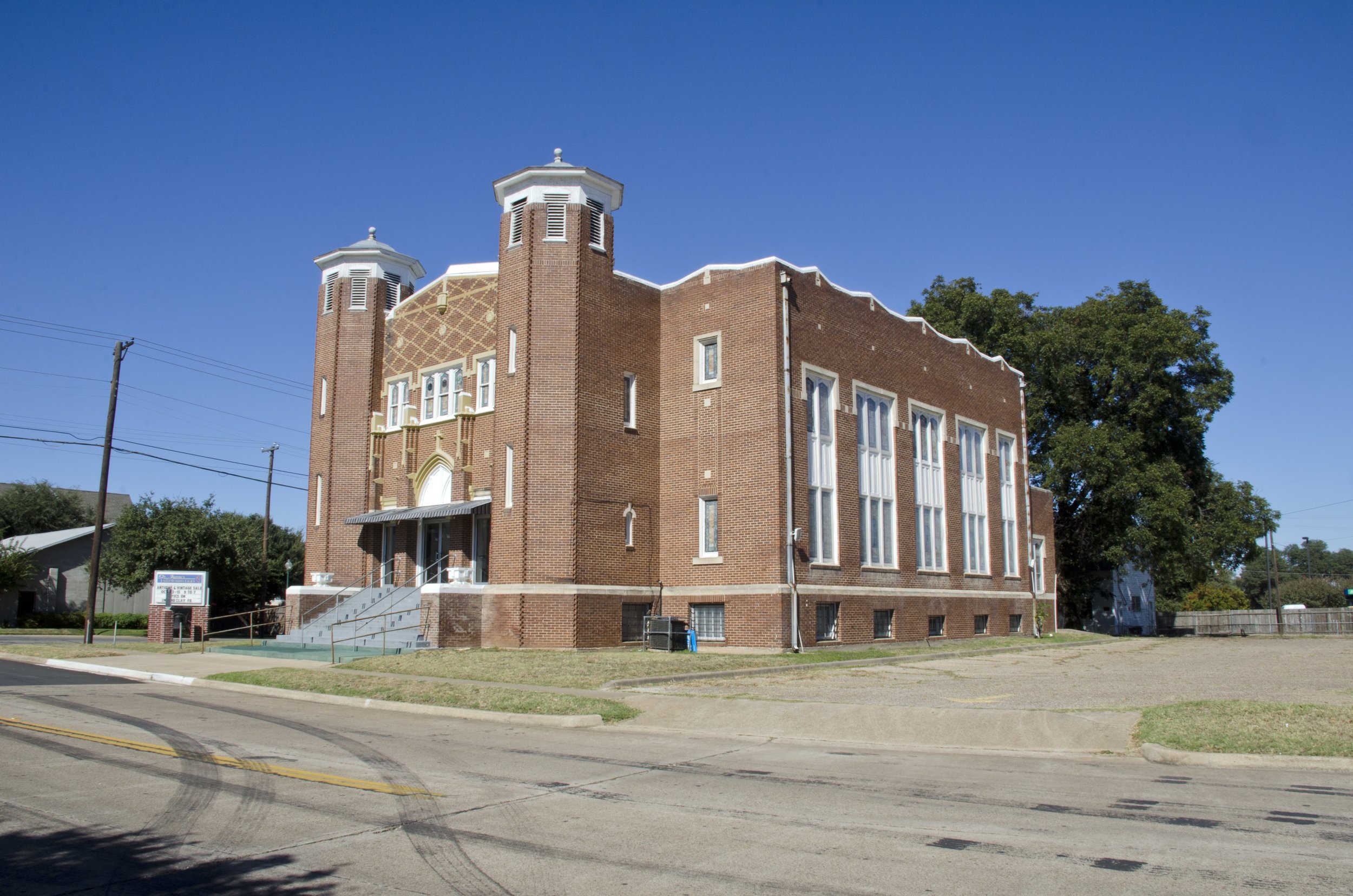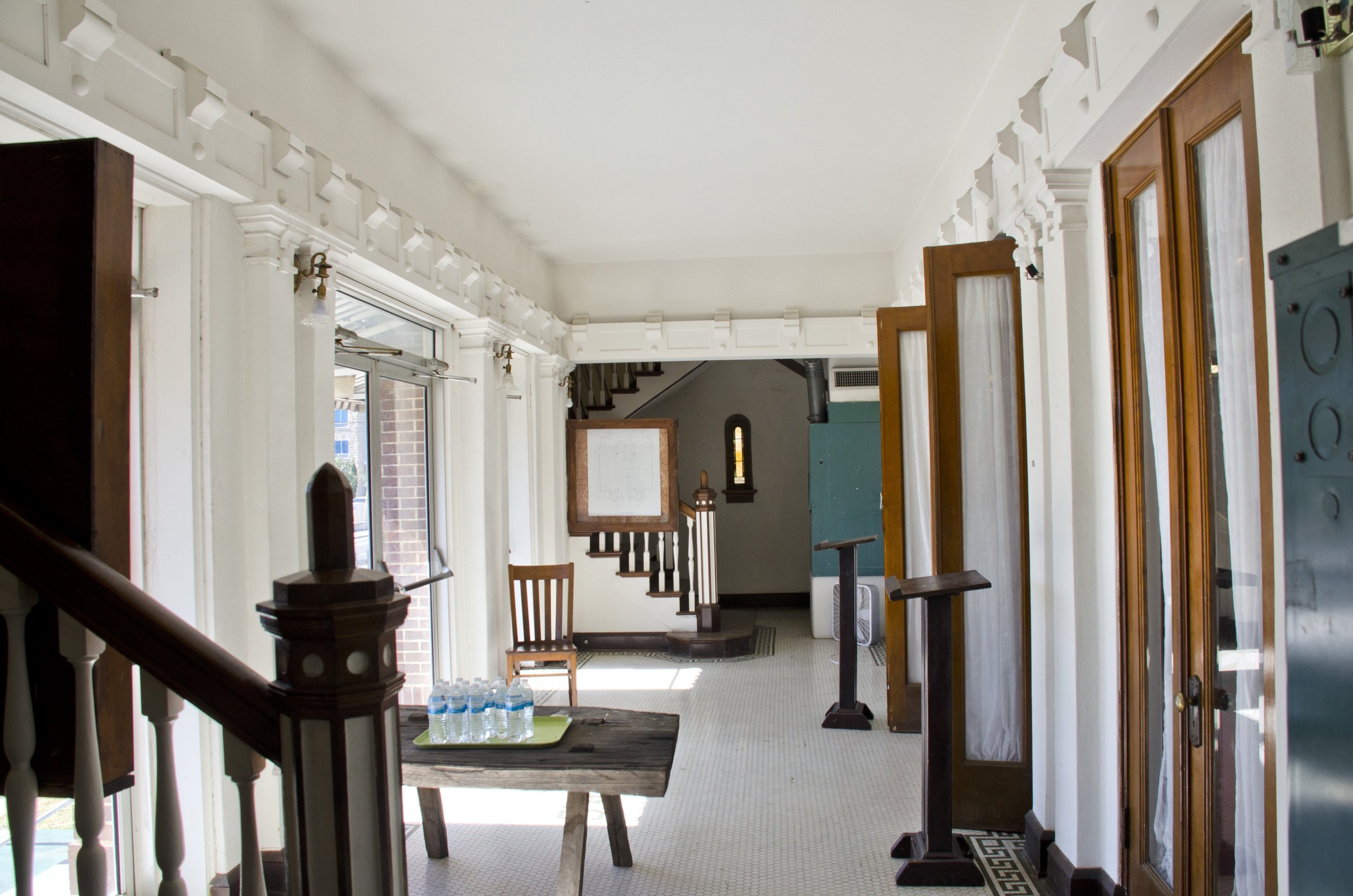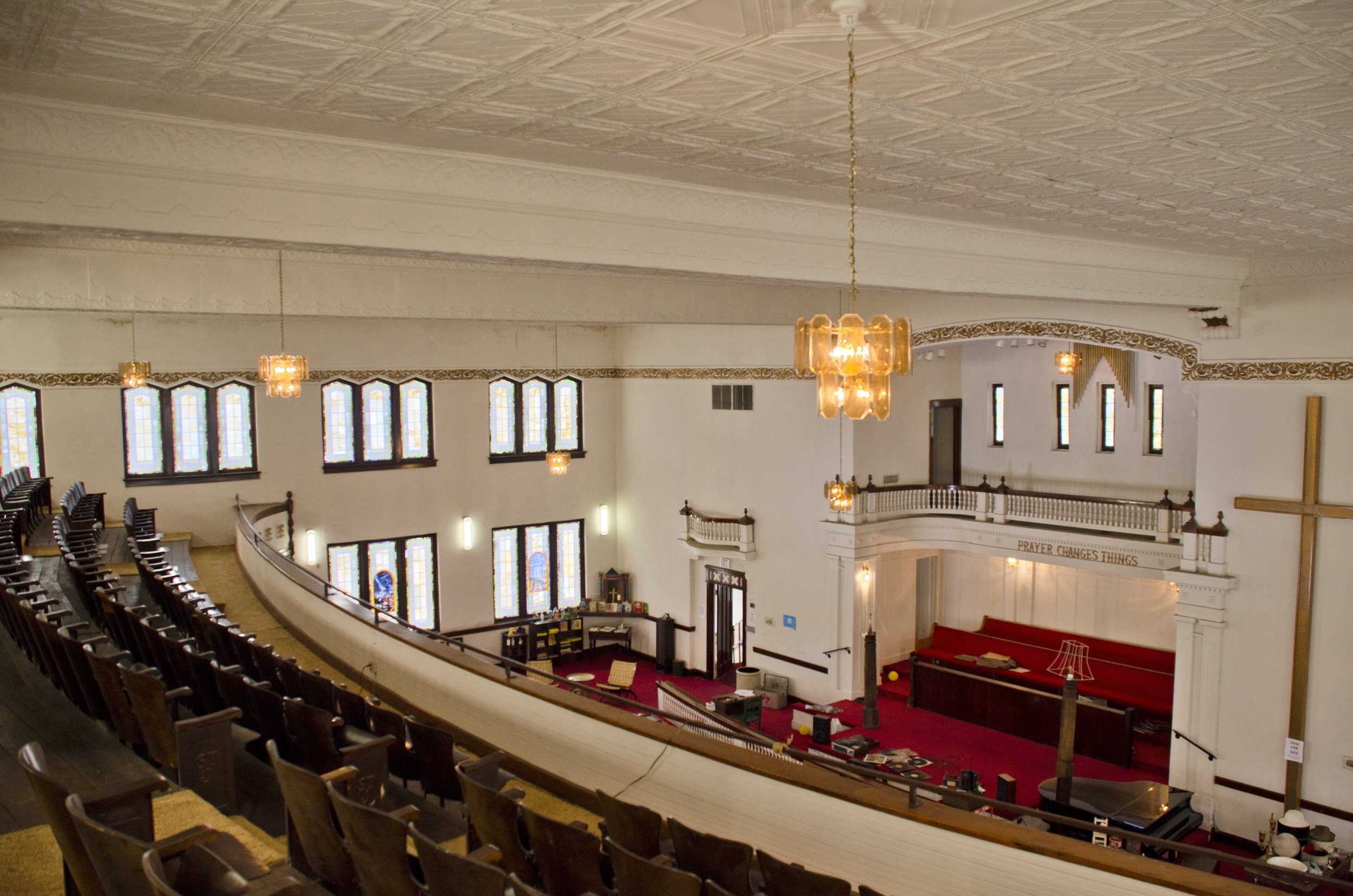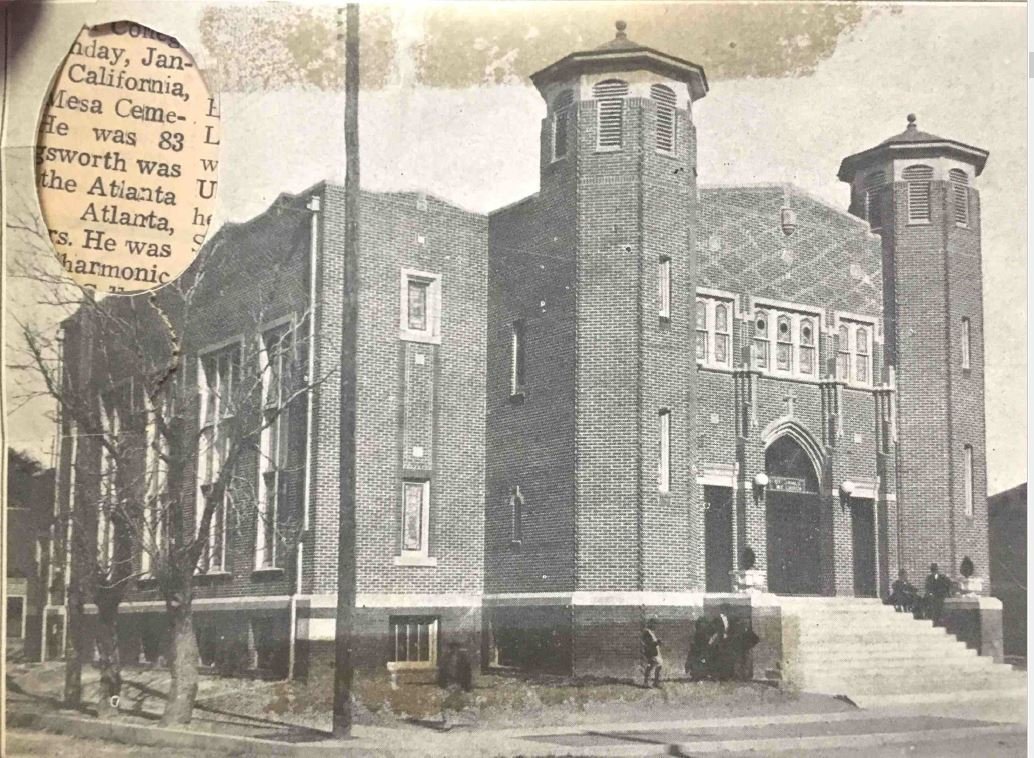St. James Methodist Episcopal Church
Waco, Texas
The St. James Methodist Episcopal (M.E.) Church was built in 1924 for the African-American M.E. congregation in Waco, Texas. Its construction represented the growth and optimism of the South Waco community before the Great Depression, which subsequently disappeared in the 1950s as a result of urban renewal, highway construction, and a devastating tornado. It is one of few extant resources reflecting the cultural heritage of that formerly African-American neighborhood.
Designed by noted Texas architect Carleton Adams of the San Antonio firm Adams and Adams, it is nominated under Criterion C for Architecture at the local level of significance as an excellent example of a Late Gothic Revival, with Tudor Revival influences, ecclesiastical building. St. James M.E. Church is a substantial red brick building with octagonal towers, pointed arch windows, polychromed brickwork, and cast stone ornament. Its style reflected the Methodist Episcopal church preference for Gothic Revival architecture and its size provided ample space for the denomination’s missionary and educational activities. Adams modeled St. James M.E. Church from St. Paul’s M.E. Church in San Antonio, another African-American congregation, and the plans were carried out by Henry W. Haskins, an African-American contractor. St. James M.E. Church is also nominated under Criterion A for Ethnic Heritage: Black and Social History. During segregation, churches like St. James M.E. were one of the few public spaces where African-Americans could freely congregate to promote the advancement of Civil Rights in Waco. It served the African-American population in Waco from the time it was built in 1924, to the time the building was deconsecrated and sold in 2016.


